Something inside you fundamentally changes when you glimpse the Earth from outer space.
Not many people have had this privilege. In the history of mankind, only 558 human beings have seen our planet from this vantage point. But those who have say that seeing the Earth as nothing more than a tiny blue speck hovering in the ether is life-altering. Take it from Ron Garan, who logged more than 178 days 71 million miles above the Earth as a crew member on the International Space Station.
“I got into this routine where I would say goodnight to the Earth before I went to bed,” he tells me. “I would float over to the cupola [the window at the bottom of the space station] and gaze back at our planet. A lot of things that seem so important on Earth dwarf into insignificance from up there. The possibilities from space seem so much clearer: You’re hit with the realization that we don’t have to accept things the way they are. We can move beyond the status quo.”
Looking at the world from this perspective has spurred astronauts towards faith, social justice, and peacemaking—a cognitive shift that has been described as “the overview effect.” Charlie Duke and Jim Irwin, for instance, became fervent Christians. Russell Schweickart started practicing transcendental meditation. John Glenn, who recently passed away, pursued a career in public service as a senator after his years at NASA. Garan wrote a book about global collaboration to ensure a better future for the planet.
But what would happen if more people had access to this view? Would the world be a better place? Would the fragility of the Earth, when compared to the vastness of the universe, inspire people to work together toward common goals? Garan believes so. “The more people who experience this, the better off those of us on the surface of the Earth are going to be,” he says.
He’s now working to turn this vision into reality by joining a startup called World View in the role of chief pilot. The company is building enormous balloons that will gently float more than 100,000 feet into the atmosphere, ferrying people upward so they can take in the vista without special training. World View is currently in the final stages of testing its technology, and while it doesn’t yet have a fixed date for its first passenger flights into space, people close to the company say that it should be ready for prime time by 2018. Dozens of customers have already reserved seats and are willing to pay top dollar for the privilege: Early bird tickets cost $75,000.
Why Balloons?
World View is the brainchild of Jane Poynter and Taber MacCallum, who spent two years together in the early ’90s in Biosphere 2, an enclosed artificial world meant to simulate the process of creating a self-sustaining habitant on another planet. They’ve collaborated on a range of projects over the last two decades, but in 2011, as the private space industry gathered steam, they decided to start a business focused on getting spacecraft into the stratosphere. “There are lots of aircraft low in the atmosphere and lots of satellites very high in the atmosphere,” MacCallum, World View’s CTO, explains. “There was this green field in the middle.”
After doing consumer surveys to better understand the space tourism market, World View found that people weren’t keen on rockets because they seem scary, unsafe, and likely to cause motion sickness. Moreover, rockets go from the Earth to outer space in approximately four minutes, rushing through the best part of the journey: the view. High-altitude balloons were more appropriate for the space tourists—especially if they could go up with a cocktail in hand.
Over the last three years, the company has been raising capital to build the technology to make the balloon flight happen. In April this year, they closed a Series B round of $15 million led by Canaan Partners.
To bring people and equipment to the stratosphere, World View is taking a very old technology—the stratospheric balloon, first developed in the 1950s—and modernizing it. During the Cold War, the U.S. and U.S.S.R. focused all of their energies on developing rockets to stay ahead in the space race. Balloons, by comparison, seemed limited in capabilities and difficult to manipulate. “We realized that nobody had taken modern technology and applied it to stratospheric ballooning,” MacCallum says. “We’re talking about Tesla batteries, 3D printing, modern computation, and electronics. With these technologies, we’re learning to do things, like very precisely changing our altitude in a balloon.”
When they started the project, they wanted to build on ballooning equipment from the last century, but struggled to find any. After much digging, they discovered that the Indian government had continued to produce high-quality old-fashioned balloons. In 2015, World View invited these Indian experts to collaborate on developing the next generation of ballooning tech. “We had to go online to people’s eBay junk stores to find plastic sealers from the 1950s because those were the only ones [the Indian consultants] knew how to use,” MacCallum says. “We were searching for these sealers everywhere and refurbishing them. Now we’re using computer-controlled, automated sealers, but we had to start where the technology was at.”
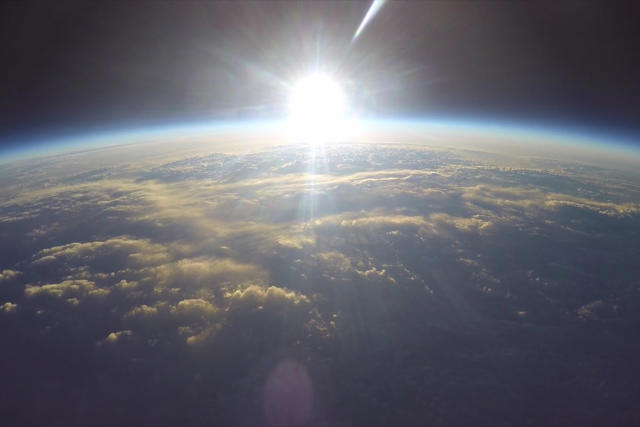
Space Tourism, Minus The Bumpy Liftoff
World View’s space tourism vehicle is called Voyager. Equipped with the latest technological advances, the balloons gently ascend into near space, up to 100,00 feet above the Earth.
Poynter, who is now World View’s CEO, envisions that this journey will be a relaxing, luxurious experience. You, along with a dozen other passengers and crew, will get into an enclosed Wi-Fi-enabled capsule before dawn, receive your beverage of choice from a fully stocked bar, then lift off in the darkness until you get to the top of the atmosphere. There will be no turbulence and no nauseating g-forces to deal with. From the large windows on every side, you will have a clear view of the starscape above, free of light pollution. For about two hours, you will be able to watch as the sun comes up from behind the Earth.
“You get to see the sunrise in real time from space, which almost no one has ever seen,” Poytner says. “Astronauts don’t see a true sunrise because they are circling the earth every 90 minutes. One minute the sun is behind the Earth and the next minute it’s gone. You get a sense of our place in the solar system in a way that is very unique.” The daylong experience of viewing the Earth from space is carefully calibrated to create the life-changing cognitive shift that, until now, only certain astronauts experience.
Initially, the trip will cost $75,000 per person, although over time, prices are expected to come down. In comparison, a Virgin Galactic trip costs $250,000 for several days of travel aboard a jet aircraft. World View will be pitching the Voyager as a luxury tourism experience to people who are used to spending hundreds of thousands of dollars on a golf trip or a lavish family getaway. MacCallum believes that the comparatively lower price point, coupled with the fact that the journey is far less physically grueling than flying in a rocket, will appeal to a greater number of potential passengers and help the company scale.
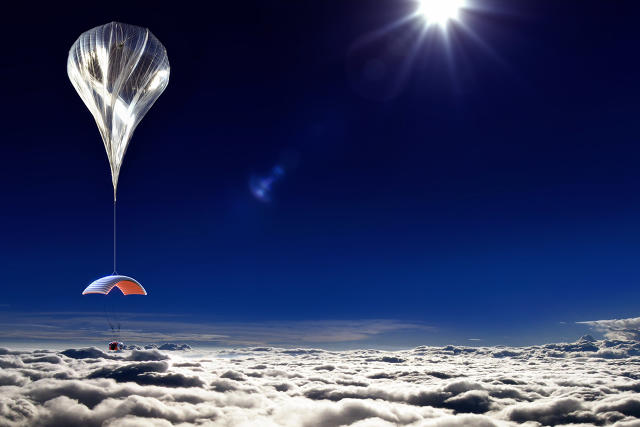
Limitless Applications
But Poynter and MacCallum are thinking way beyond the tourism industry. The commercial applications of the technology could be far more lucrative than taking visitors up into the sky.
Even as World View develops the Voyager, it is building a range of unmanned balloons, called Stratollites, that will ascend up to 150,000 feet. These devices can be manipulated so that they stay in one specific location or travel vast distances, and can carry up to 4,500 kg in commercial payloads that could include sensors, telescopes, and communication devices. Unlike rockets, they can launch rapidly on demand and return payloads back to Earth safely.
Stratollites can be used for a wide range of possible applications, from collecting better weather data to capturing higher-resolution images of the Earth to setting up more accurate communications systems for internet delivery or disaster recovery. MacCallum explains that the unique benefit of the Stratollite is that it can stay in one location for an extended period of time, unlike satellites, which circle the planet. And because Stratollites are closer to the Earth, they can take images in much higher resolution.
While a satellite might take a picture of a city every few days from orbit, a balloon can stay above that city for days or months, identifying the minute-by-minute traffic patterns in that location. This information could be valuable to city planners or delivery companies like UPS or FedEx. “We’re offering persistence over a particular location,” MacCallum says. “It’s like having your own personal satellite that hovers over one spot with the instruments that you’re interested in putting there.”
The other important factor is financial. Geostationary satellites cost hundreds of millions of dollars, and launching and operating mass orbiting satellites can add tens of millions more. World View’s executives declined to give specific figures, but say that Stratollites will cost significantly less than other technologies.
World View says that it has a slew of orders coming in from the Department of Defense, NASA, and private companies, including those in the communications and meteorological industries. Stratollites are already flying on a regular basis, and the data they are collecting are helping World View tailor the technology to specific applications and refine it for the Voyager system.
“The goals on both sides of the business are to change the world,” says Garan. “The applications of the Stratollite can help improve life on the planet, whether that’s providing internet access to impoverished parts of the world, better climate modeling to more accurately predict the weather, quicker disaster response such as forest fire detection—the list goes on. Because we are making it affordable, countries that could not afford these capabilities before can now afford them.”
In other words, another giant leap for mankind.
World View wants to offer people the chance to see our planet from space.
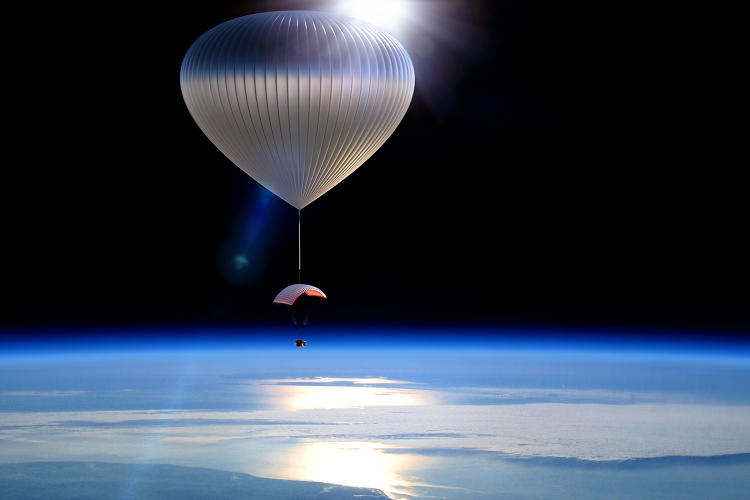
The balloons would ferry passengers into the stratosphere.
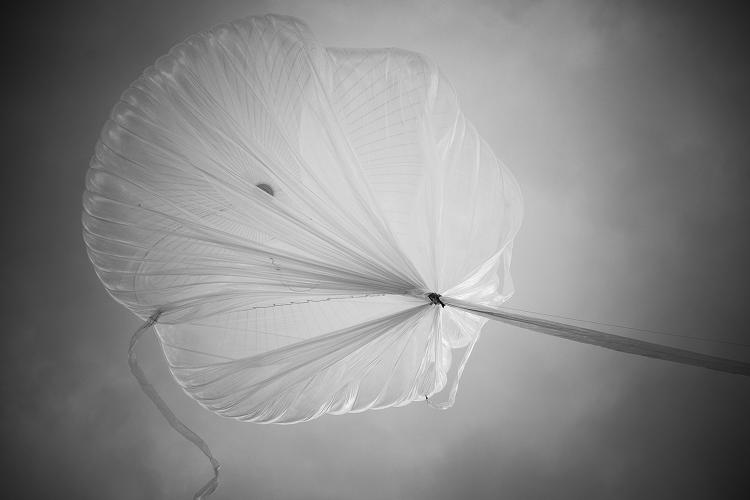
The two-hour journey will cost $75,000 to start.
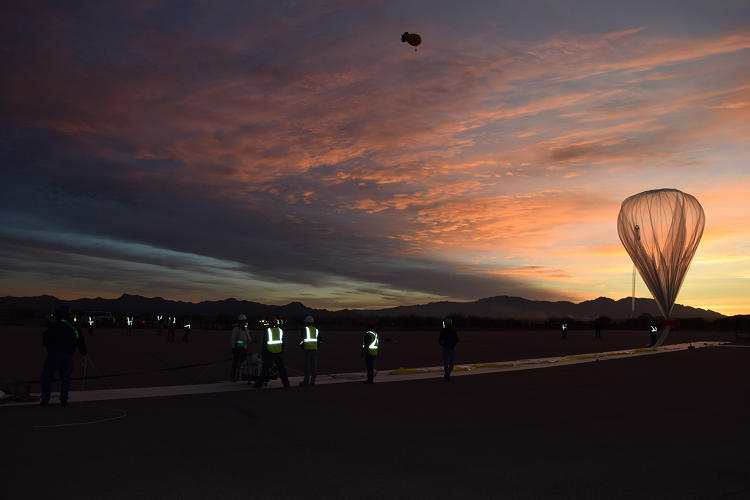
Passengers would ride in an enclosed capsule measuring about 450 square feet.

One advantage of balloon space travel: no sickening g-forces.

In the history of mankind, only 558 human beings have seen Earth from space.
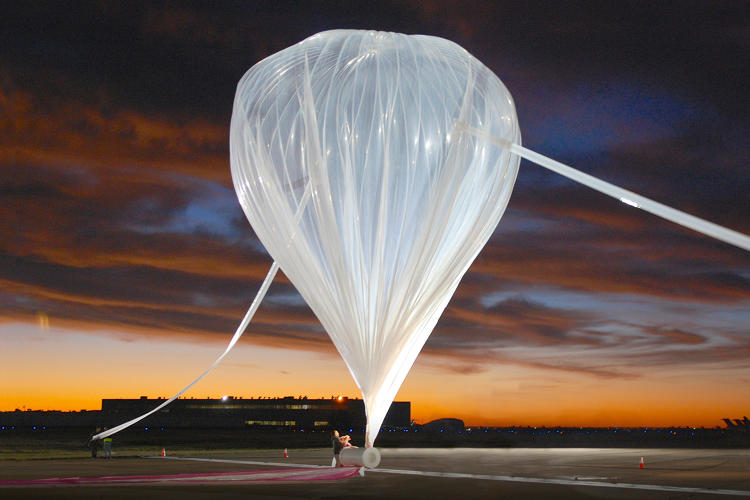
Fast Company , Read Full Story
(50)